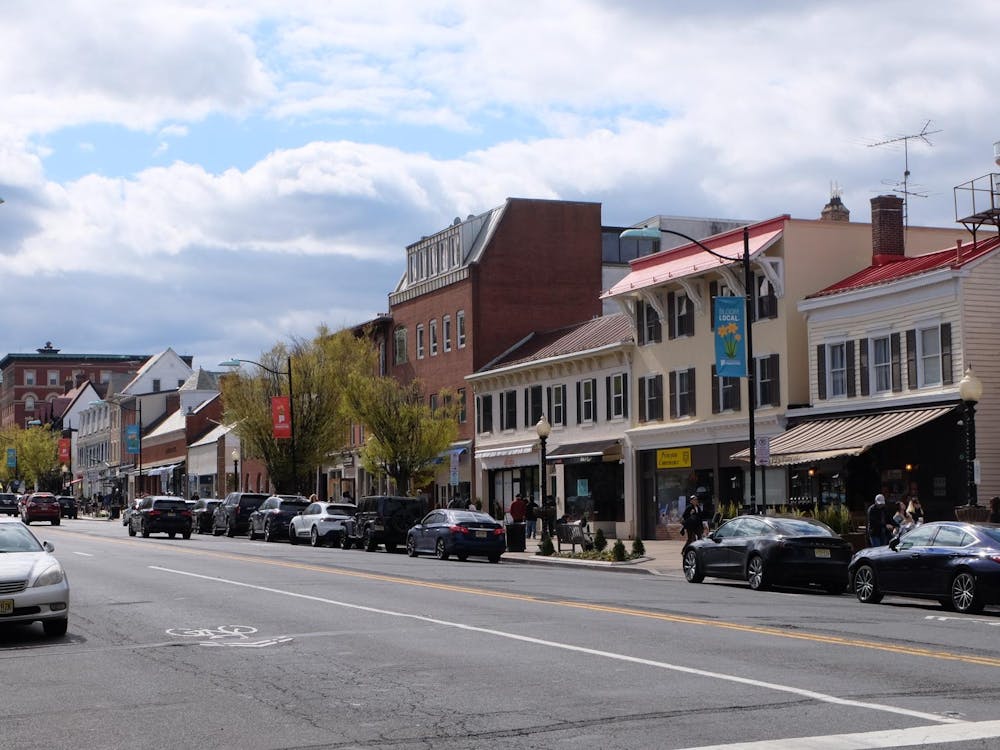A collection of watercolor paintings and drawings that had been sitting unidentified for 60 years in the University Library's Manuscripts Division has been recognized by University of Reading professor Anna Gruetzner Robins as the work of renowned 20th century Welsh artist Gwen John.
Greutzner estimates that the paintings are roughly worth $770,000.
While conducting research on 19th century English illustrator Aubrey Beardsley, Robins requested the papers of the British poet Arthur Symons. Symons was a correspondent of William Butler Yeats who had supported Beardsley's work.
Robins was surprised to find included with Symons’ papers in a dusty box labeled "unidentified paintings" that held an accordion file containing two albums crudely fastened with brown cotton sewing thread.
"So she is looking at this, calls me to the reading room and says, ‘Oh, I made a great discovery, Don! Could you come down and look at this?This is very exciting,' ” said Don Skemer, curator of manuscripts in the Department of Rare Books and Special Collections.
Inside the albums were 23 watercolor paintings of nuns and parishioners mostly viewed from the back, scenes from a train station, a woman wearing a feather boa and a black cat sitting in a window. A few of the paintings also had drawings on the reverse side.
Though there were no signatures, inscriptions or dedications on the paintings, Robins said she immediately recognized them as the work of Gwen John.
"She had a distinct style of painting which distilled the essence of the figures she painted into succinct yet recognisable forms," Robins said in an email. "She also was a brillant colorist and used close and contrasting tonal colour in an achingly beautiful way."
The watercolors Robins found are the first works on paper that can be securely dated.
Born in Pembrokeshire, John lived in France for the majority of her life.In 1910, she moved to the Parisian suburb of Meudon and entered the Catholic Church — an event that art historians say marked the beginning of her productive period as an artist.
Robins believes that John met Arthur Symons in Paris, corresponded with him briefly, and gave him the paintings that were unearthed in the Manuscripts division as a gift in 1920.

There are probably 40 or 50 boxes of papers in the Arthur Symons collection that were never properly organized, Skemer explained.
At the time of the donation of the Arthur Symons papers in 1951, "collections were coming in one after another — being sought, being donated or acquired or purchased or whatever and there was no staff to deal with them,” he said.
But while the watercolors are a great discovery, Skemer said he anticipates that there is more lying hidden in the library.
In fact, to Skemer, the big question is not why the library had not discovered the John watercolors beforehand, but why John had never signed them.
"I don't think she was known back then, particularly," he speculated, noting that, until the mid-1960s, John was overshadowed by her brother Augustus John and known primarily as the lover of the famous sculptor Auguste Rodin.
"If you put in Gwen John's name [in the online catalog], what you'll discover is that there has been a lot of literature about her now: monographs, exhibition catalogs and museum catalogs and so on, but, in 1950, she was completely unknown,” he said.
Skemer postulated that it took the success of feminism in the 1960s for art historians to finally recognize her "as a painter in her own right."
The Manuscripts Division reviews old works on a priority basis, cataloguing current works and conducting grant-funded work first before turning to archive old donations and purchases.Visiting researchers with specialties frequently play a role in identifying unknown works.







